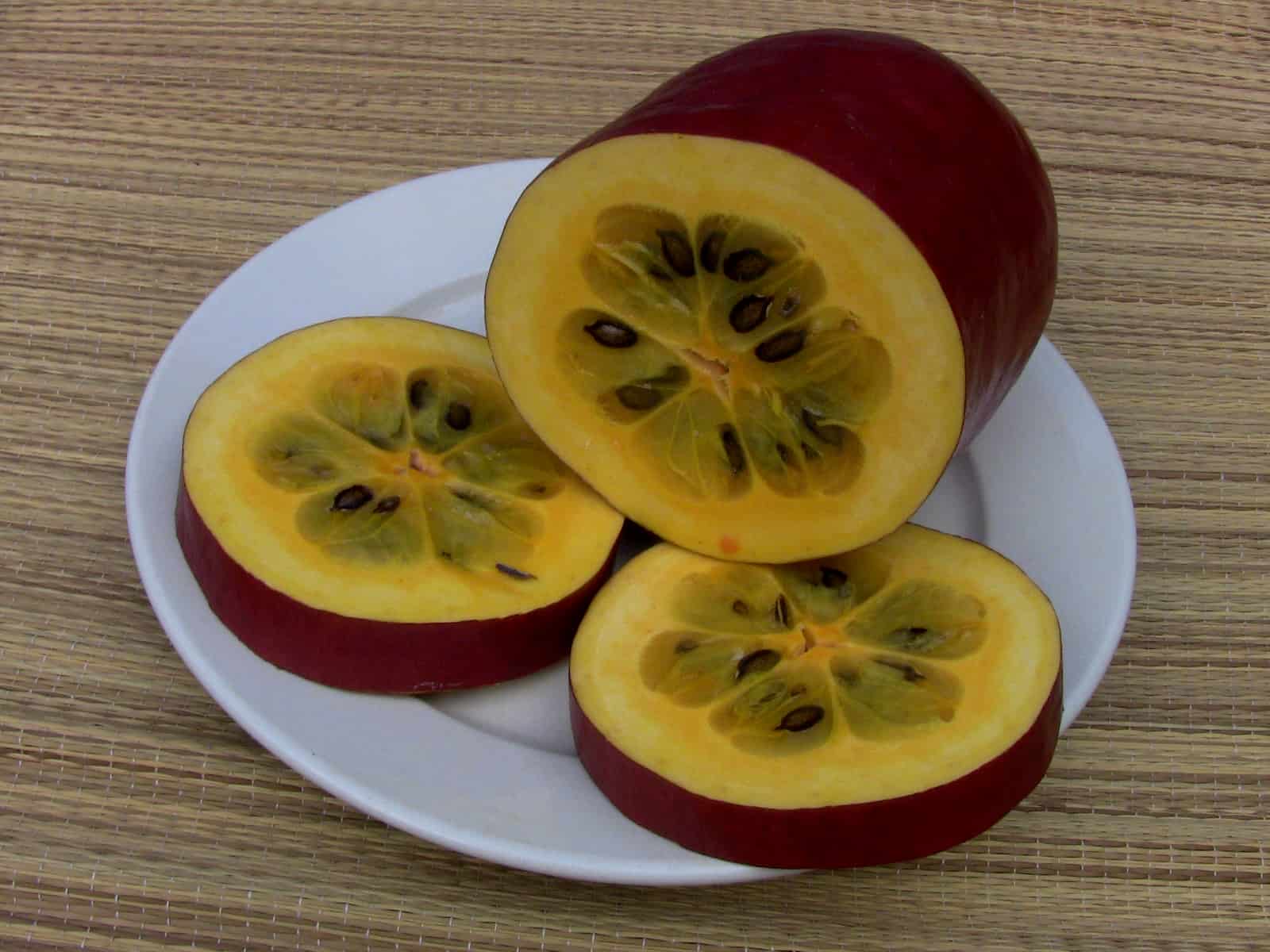We’ve been enjoying a harvest of one of our favorite novelty squashes of the tropics. Known as musk cucumber in English, its common name here is Cohombro (Sicana odorifera). This is one of the most unusual plants in the tropics. Its large, 12- to 14-inch long, maroon-colored, sausage-shaped fruit is a squash with the taste of cantaloupe. That’s right, cantaloupe!
This plant is believed to be native to Brazil, but spread throughout tropical pre-Columbian America. It was first mentioned by European writers in 1658 as cultivated and popular in Peru. Venezuelans and Brazilians are partial to the vine as an ornamental, but in Cuba, Puerto Rico and Mexico it is grown for the usefulness of the fruit.
We found this unique, fruity squash more than 20 years ago in our local market and have grown it for many years. We find it is much easier to grow than organic cantaloupe here in the tropics, and it provides the same flavorful treat.
Cohombro seems to be closely related to the luffa squash. Its leaves and flowers are very similar. Both can be planted, like most squashes, using a composted, fertile circle or “hill” about two feet in diameter for planting one or two seeds. Campesinos plant this squash near a tree or fence so it can climb while it’s growing.
The cohombro grows vigorously in the first two months, then begins to flower and set its fruit. The young, tender green squash can be selectively chosen for eating much like zucchini squash. Later, the fruits begin to fill out and turn a dark maroon color, which is quite the sight. It’s not unusual for one cohombro squash plant to produce a dozen or more “sausages.” This novelty squash certainly wins comments from neighbors and friends.
We’ve found it better to let the squashes mature as much as possible on the vine before picking; this ensures that the squashes will have the maximum sweetness and flavor. Sometimes the squash is slow to ripen, taking several weeks before it begins to give off a delightful fragrance of cantaloupe throughout the home. That’s why it also called casabanana.
Cohombro is a very hardy plant with few insect problems or plant diseases, and it grows in a wide range of bioregions here in Costa Rica. Fertilization seems to be the most important aspect of growing good fruit. We always try to apply about one-half wheelbarrow of our best, aged compost to each “hill” for planting cohombro seeds. Applications of limestone and a little bit of ashes also helps to make the cohombro grow vigorously. Foliar spraying the leaves with seaweed extract or compost tea also insures good growth and production.







